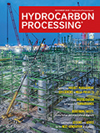Safe design and operation of burn pit flare systems
This article will mainly focus on horizontal flare systems and grade-level burn pits. Design considerations, operational challenges and several lessons learned will be discussed.
IP: 10.1.103.123
This is a preview of our premium content. Thank you for your interest—please
log in or
subscribe to read the full article.
The Authors
Al-Tijani, A. H. - Saudi Aramco, Dhahran, Saudi Arabia
ABDULAZIZ H. AL-TIJANI is an Engineering Consultant at Saudi Aramco's Process and Control Systems Department in Dhahran, Saudi Arabia. Al-Tijani supports company operations and project design, mainly in flare and relief systems and flare gas recovery applications. He supports Saudi Aramco and joint venture oil and gas operational facilities, pipelines, process simulations and various phases of projects. He earned a BS degree in chemical engineering from King Fahd University of Petroleum and Minerals (KFUPM) and an MS degree in oil and gas surface facilities from KFUPM (in partnership with IFP).
Al-Mubayedh, M. - Saudi Aramco,
MOHAMMAD AL-MUBAYEDH is a process engineer at Saudi Aramco's Process and Control Systems Department within the Flare and Relief Systems Group. He has more than 6 yr of experience with Saudi Aramco, including company operations and project support. Al-Mubayedh has led the commissioning and process stabilization of a flare system in one of the company's gas operation facilities. He has also conducted several FGRS feasibility studies to identify reliable FGRS applications. Al-Mubayedh earned a BS degree in chemical engineering from Oregon State University in 2017.
Al-Sanad, A. - Saudi Aramco, Dhahran, Saudi Arabia
Abdullmajeed Al-Sanad is a Process Engineer at Saudi Aramco. He works with the Process and Control Systems Department within the Flare and Relief Systems Group. He has 8 yr of experience. Al-Sanad has been involved in major tasks at the company, such as NGL recovery plant commissioning and Saudi Aramco’s decarbonization strategy development. He has also led several milestones in the company’s flaring minimization programs. He earned a BS degree in chemical engineering from King Fahd University of Petroleum and Minerals (KFUPM).
Seefeldt, G. - Zeeco, Tulsa, Oklahoma
GREG SEEFELDT is the Global Director of Flare Systems at Zeeco, Inc. During his 20-yr career at Zeeco, Seefeldt has held various technical and leadership positions involving flare systems, flare gas recovery systems and vapor recovery systems. He graduated from Oklahoma State University with a BS degree in mechanical engineering and is a registered professional engineer in Oklahoma (U.S.).
Related Articles
From the Archive










Comments